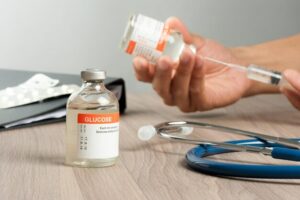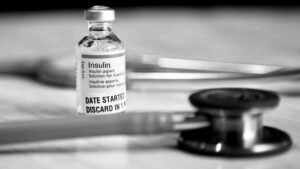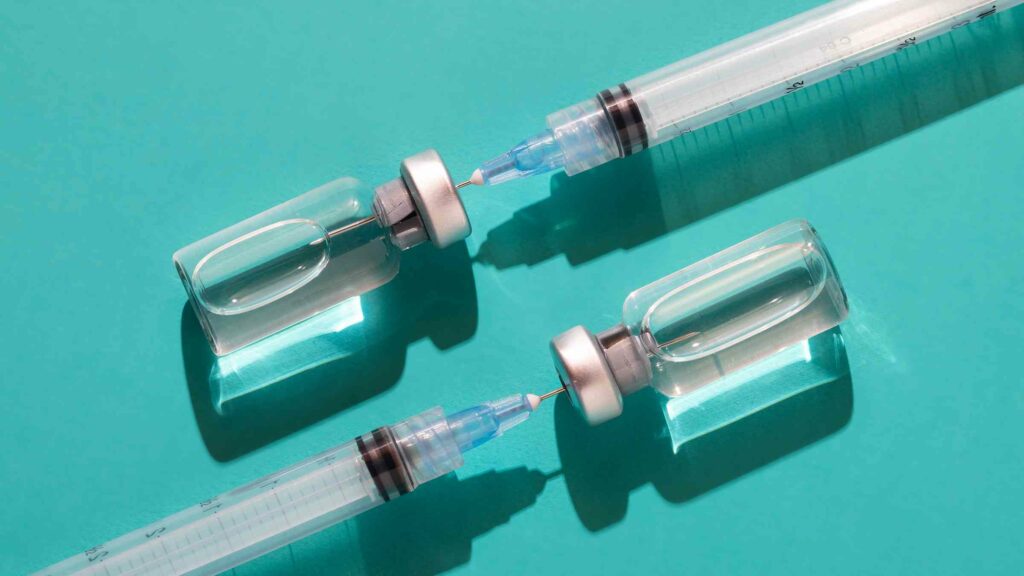Hypoglycemia, characterized by dangerously low blood sugar levels, demands swift action to prevent complications. Amidst the array of tools available, emergency glucose injections stand out as a rapid and effective intervention. In this blog, we’ll delve into the significance of these hypoglycemia injections, exploring their role in management and empowering individuals with the knowledge to navigate such critical moments confidently and quickly.
Contents
When To Seek Hypoglycemia Injection?
 Determining when to seek a hypoglycemia injection is crucial for individuals at risk of low blood sugar episodes, particularly those with diabetes. Here are some key situations that warrant the use of a hypoglycemia injection:
Determining when to seek a hypoglycemia injection is crucial for individuals at risk of low blood sugar episodes, particularly those with diabetes. Here are some key situations that warrant the use of a hypoglycemia injection:
- Symptoms of Hypoglycemia: If you experience symptoms such as shakiness, sweating, dizziness, confusion, irritability, weakness, or hunger, especially if blood glucose monitoring confirms low levels (typically below 70 mg/dL), it’s time to consider using a hypoglycemia injection.
- Inability to Consume Food or Glucose: In some cases, individuals may be unable to eat or drink due to severe symptoms or altered consciousness. In such situations, a hypoglycemia injection can provide a quick and effective way to raise blood sugar levels.
- Loss of Consciousness or Severe Impairment: If hypoglycemia progresses to the point where the individual loses consciousness or experiences significant cognitive impairment. Then, immediate administration of a hypoglycemia injection by a caregiver or bystander is essential to prevent further complications.
- Failure of Oral Glucose Treatments: If initial attempts to raise blood sugar levels with fast-acting carbohydrates like glucose tablets, fruit juice, or regular soda do not yield results within 15 minutes, a hypoglycemia injection should be considered.
- High-Risk Situations: Certain scenarios, such as intense physical activity, prolonged fasting, or insulin or other glucose-lowering medications, increase the risk of hypoglycemia. Being prepared with a hypoglycemia injection can provide peace of mind and swift intervention if needed.
Individuals with diabetes or those at risk of hypoglycemia need to discuss with their healthcare provider when and how to use a hypoglycemia injection. Proper education, training, and preparation can empower individuals and their caregivers to respond effectively to hypoglycemic episodes and minimize potential complications.
Which Injection Is Used For Hyperglycemia?
For hyperglycemia, the administration of insulin is the primary treatment method. Insulin is a hormone that helps regulate blood sugar levels by facilitating the uptake of glucose from the bloodstream into cells for energy production or storage. In individuals with diabetes, either the body does not produce enough insulin (Type 1 diabetes) or the body’s cells become resistant to the effects of insulin (Type 2 diabetes), leading to elevated blood sugar levels.
There are various forms of insulin available, including:
- Rapid-acting insulin: Begins to work within 15 minutes, peaks in about 1 hour, and lasts for 2 to 4 hours.
- Short-acting insulin: Begins to work within 30 minutes to 1 hour, and peaks in 2 to 3 hours. And lasts for about 3 to 6 hours.
- Intermediate-acting insulin: Begins to work within 2 to 4 hours, and peaks in 4 to 12 hours. Then, it lasts for about 12 to 18 hours.
- Long-acting insulin: Begins to work several hours after injection and provides a steady level of insulin for up to 24 hours.
- Ultra-long-acting insulin: Provides a continuous level of insulin for more than 24 hours, with some formulations lasting up to 42 hours.
The specific type of insulin and dosing regimen prescribed by a healthcare provider will depend on factors. Such as the individual’s blood sugar levels, insulin sensitivity, lifestyle, and treatment goals.
What Are Some Other Hypoglycemia Injections Used?
 In addition to emergency glucose injections, there are other medications used to treat hypoglycemia, especially for individuals with diabetes who experience severe or recurrent episodes. Some examples include:
In addition to emergency glucose injections, there are other medications used to treat hypoglycemia, especially for individuals with diabetes who experience severe or recurrent episodes. Some examples include:
Glucagon
Glucagon is a hormone produced by the pancreas that helps raise blood sugar levels by stimulating the liver to release stored glucose into the bloodstream. These injections are used in cases of severe hypoglycemia where the individual is unable to consume carbohydrates orally or is unconscious. Glucagon kits are available for emergency use and are administered by caregivers or bystanders according to the instructions provided.
Diazoxide
Diazoxide is a medication that works by inhibiting insulin release from the pancreas. Thereby preventing further lowering of blood sugar levels. It is used in cases of hyperinsulinism or insulinoma, rare conditions characterized by excessive insulin production leading to recurrent hypoglycemia. Diazoxide is typically administered by injection in a healthcare setting under the supervision of a medical professional.
Octreotide
Octreotide is a synthetic hormone that inhibits the release of insulin and other hormones that lower blood sugar levels. It is used in the management of insulinoma or other conditions associated with excessive insulin secretion. This is administered by injection and may be given as a one-time dose or as a continuous infusion in severe cases of hypoglycemia.
Somatostatin Analogues
Somatostatin analogues, such as lanreotide and pasireotide, are medications that mimic the effects of somatostatin. It is a hormone that inhibits the release of insulin and glucagon. These medications are used in the treatment of insulinoma or other conditions causing hyperinsulinism and recurrent hypoglycemia. Somatostatin analogues are typically administered by injection and may be given as a long-acting formulation to provide continuous suppression of insulin secretion.
Hence, it’s important for individuals with diabetes or other conditions predisposing them to hypoglycemia to discuss with their healthcare provider. They will help in choosing appropriate treatment options and emergency measures for managing low blood sugar levels. Proper education, training, and preparation can help individuals and their caregivers respond effectively to hypoglycemic episodes and prevent complications.
What Are The Benefits Of Hypoglycemia Injections?
 The benefits of hypoglycemia injections, particularly emergency glucose injections, are significant for individuals at risk of experiencing low blood sugar levels, such as those with diabetes. Some key advantages include:
The benefits of hypoglycemia injections, particularly emergency glucose injections, are significant for individuals at risk of experiencing low blood sugar levels, such as those with diabetes. Some key advantages include:
Rapid Blood Sugar Elevation
Hypoglycemia injections, such as those containing glucose or glucagon, can quickly raise blood sugar levels within minutes. This rapid response is crucial in preventing or reversing the symptoms of hypoglycemia, which can range from mild discomfort to severe impairment or loss of consciousness.
Ease of Administration
Many hypoglycemia injections are designed for easy administration, even in emergencies. Glucose gel or liquid formulations can be quickly consumed orally, while glucagon injections come in pre-filled syringes with simple instructions for use, making them suitable for caregivers or bystanders to administer if necessary.
Portability and Accessibility
Hypoglycemia injections are often compact and portable, allowing individuals to carry them easily wherever they go. This accessibility ensures that individuals can respond promptly to hypoglycemic episodes, whether at home, work, or on the go, without the need for specialized equipment or medical facilities.
Effectiveness in Severe Cases
In severe hypoglycemia where the individual is unable to consume oral carbohydrates or is unconscious, hypoglycemia injections such as glucagon can be lifesaving. Glucagon works by stimulating the liver to release stored glucose into the bloodstream, providing a rapid and reliable means of raising blood sugar levels even in critical situations.
Versatility in Treatment Options
There are various types of hypoglycemia injections available, including glucose gels, liquids, and glucagon formulations. This versatility allows healthcare providers to tailor treatment options to individual needs and preferences, ensuring that individuals have access to the most suitable intervention for managing hypoglycemia effectively.
Reduced Risk of Overcorrection
Unlike some oral treatments for hypoglycemia, hypoglycemia injections deliver a precise dose of glucose or glucagon. Hence, reducing the risk of overcorrection or subsequent rebound hyperglycemia. This can occur when blood sugar levels rise too rapidly or excessively.
Overall, hypoglycemia injections play a vital role in the management of low blood sugar levels. Thus, providing a rapid and reliable means of restoring glucose balance and preventing complications in individuals at risk of hypoglycemia.
Conclusion
In conclusion, hypoglycemia injections, such as emergency glucose and glucagon, are invaluable tools for managing low blood sugar levels. These injections offer rapid and effective means of raising blood sugar levels, providing essential relief from symptoms, and preventing potentially life-threatening complications. Their ease of administration, portability, and versatility make them indispensable in various situations, from mild hypoglycemia to severe emergencies.
By ensuring access to hypoglycemia injections and educating individuals and caregivers on their proper use, we can empower people to navigate hypoglycemic episodes with confidence and safeguard their health and well-being. Do you want to get rid of diabetes? Join our online diabetes treatment program and reverse Diabetes naturally through lifestyle changes such as a Personalized Diet plan, Exercise, Yoga, dieticians, and health coaches.

